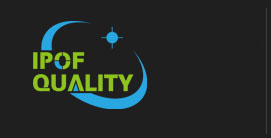
RMC certification introduction
RCM mark (including safety requirements & EMC requirements)
Beginning March 1, 2013, Australia began implementing the new Electrical Safety Regulations (EESS) and the Single Regulatory Compliance Mark (excluding New South Wales). [SAA certification and C-Tick certification are phased out, and three conformity marks (C-Tick, A-Tick and RCM) are formally merged into a single regulatory compliance mark RCM]
The product covers electrical equipment with a rated voltage of 50 V AC -1000 V AC or 120 V DC - 1500 V DC. According to their risk, they are divided into three categories: Category 3 (high risk), Category 2 (medium risk) and Category 1 (low risk). Among them, Class 2 and Class 3 electrical appliances are required to be registered in the national database, and Class 3 appliances are registered before registration. It is mandatory to obtain conformity certification at an EESS accreditation body.
At the same time, the EMC regulatory products issued by the Australian Communications and Media Authority are classified into high, medium and low risk categories according to the EMC characteristics of the products. The high-risk products are mandatory to be registered in the national database.
The above EESS and ACMA EMC regulated products must meet the certification and registration requirements and be affixed with the RCM logo in order to be sold in the Australian New Market (except New South Wales).
Australia energy efficiency GEMS
From October 1st, 2012, Australia and New Zealand will be certified by the GEMS for energy efficiency certification. It is used to replace the previous Australian energy efficiency MEPS certification. GEMS certification is mandatory. Products under the control must have GEMS certification before they can be on the market. Sales, and the applicant must be a company registered locally in Australia.
Currently GEMS-certified products include: air conditioners, refrigerators, water heaters, swimming pool mercury, dryers, washing machines, dishwashers, non-domestic fans, electric motors; external power supplies, televisions, set-top boxes, video game controllers, computers, Display, video recorder, data center, transmission voltage, battery charger.
Australia and New Zealand have mutual recognition agreements, and all products that have obtained Australian certification can successfully enter the New Zealand market. Australian standards begin with “AS” and the Australian and New Zealand joint standards begin with “AS/NZS”. Australia and New Zealand are members of the IECEE-CB system. Directly recognize CB test reports and certificate companies can apply for RCM certification by supplementing the difference test with the CB test report.
Australia RCM certification service scope
We can provide testing, certification and registration services for exporting products to the Australian New Market through the ANZ-approved laboratories. The test report is directly recognized by the Australian government and helps customers to obtain certification and pass the national database more conveniently. Registration, guide customers to correctly attach relevant signs, provide a full range of technical services for export companies to explore the Australian market.
